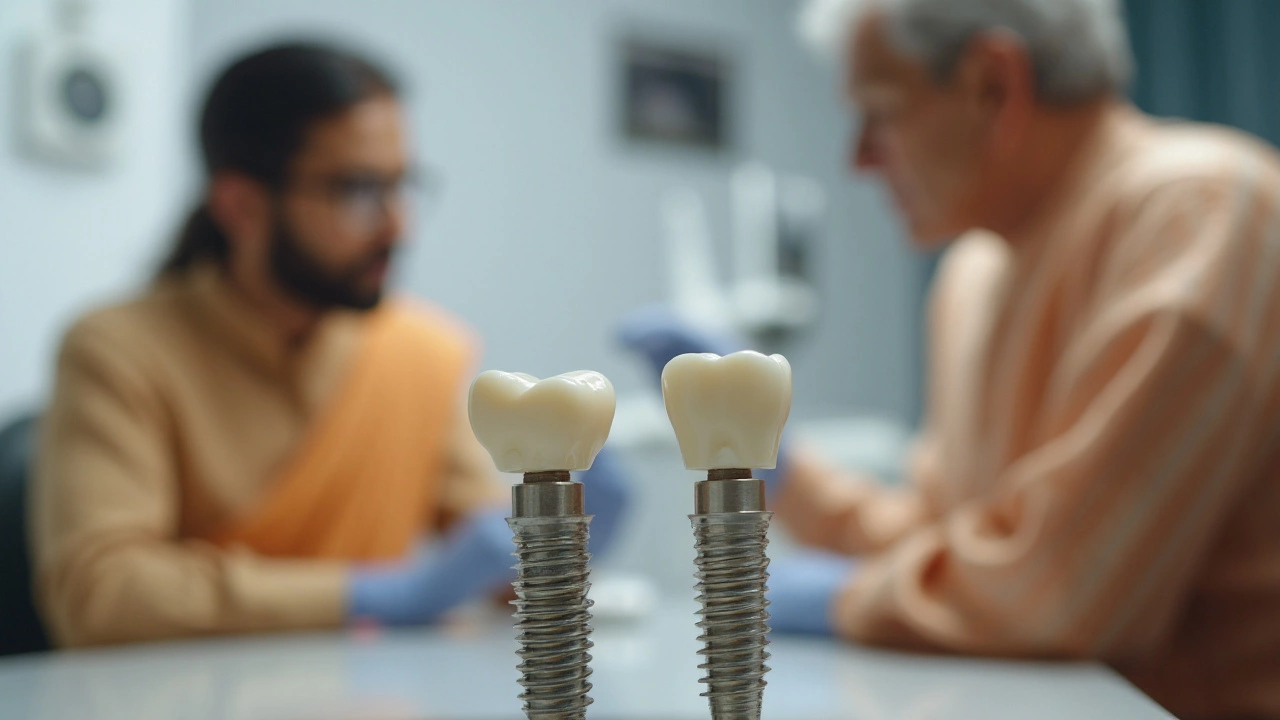Dental implants have become a popular and reliable option for tooth replacement, but many wonder how long they actually last. This article explores the durability of dental implants, factors affecting their lifespan, and provides tips for maintaining them. We also compare them to other tooth replacement options and discuss current innovations in dental technology. Understanding these aspects can help individuals make informed decisions about their oral health.
Read MoreImplant Lifespan: How Long Do Implants Really Last?
Whether it’s a dental crown, a knee joint, or a spinal screw, most of us expect implants to stick around for years. The truth is, an implant’s life isn’t set in stone – it depends on a handful of everyday factors. In this guide we break down what controls implant durability, the warning signs that something’s off, and simple habits that can add years to your implant’s service.
What Influences Implant Longevity
First off, material matters. Titanium and ceramic are the most common choices because they resist corrosion and bond well with bone. Implants made from cheaper alloys can corrode faster, especially if you have a history of gum disease or joint inflammation.
Second, your own biology plays a big role. Good bone density helps the implant stay stable. People with osteoporosis, diabetes, or smoking habits often see shorter implant lives because their bodies struggle to heal around the foreign object.
Third, the surgical technique counts. A well‑placed implant that avoids excess stress will last longer. Misalignment can create uneven pressure, leading to wear or loosening over time.
Fourth, everyday stress on the implant matters. High‑impact sports, heavy lifting, or grinding your teeth can accelerate wear. Even simple habits like chewing very hard foods or skipping recommended physiotherapy after joint surgery can add up.
Finally, maintenance and follow‑up care are key. Regular dental cleanings, physiotherapy sessions, and routine X‑rays let your doctor spot early signs of trouble before they become big problems.
Practical Tips to Extend Your Implant’s Life
Stay on top of hygiene. For dental implants, brush twice a day, floss daily, and schedule professional cleanings every six months. Good oral health reduces bacterial buildup that can erode the implant‑bone interface.
Mind your diet. Avoid extremely hard foods like ice cubes or sticky candy that can strain dental work. For joint implants, keep weight in a healthy range – excess pounds put extra pressure on knees and hips.
Use protective gear. If you play contact sports, wear a mouthguard. For high‑impact activities, consider joint braces or orthotics that spread the load evenly.
Follow rehab plans. After surgery, do the prescribed physiotherapy exercises. They strengthen surrounding muscles, taking pressure off the implant and promoting proper healing.
Quit smoking. Nicotine reduces blood flow and slows bone healing. Cutting the habit dramatically improves the chances of a long‑lasting implant.
Schedule regular check‑ups. Your doctor can detect loosening, infection, or wear early with X‑rays or scans. Early intervention often means a simple adjustment rather than a full‑scale replacement.
If you notice any warning signs – persistent pain, swelling, clicking noises, or sudden changes in how the implant feels – call your healthcare provider right away. Ignoring these clues can lead to larger failures that are harder and costlier to fix.
In short, implants can last anywhere from 5 to 20 years, sometimes even a lifetime, when you give them the right environment. Your role is to keep the surrounding tissue healthy, avoid unnecessary stress, and stay in touch with your doctor. By doing that, you’ll get the most out of the investment you made in your health.





